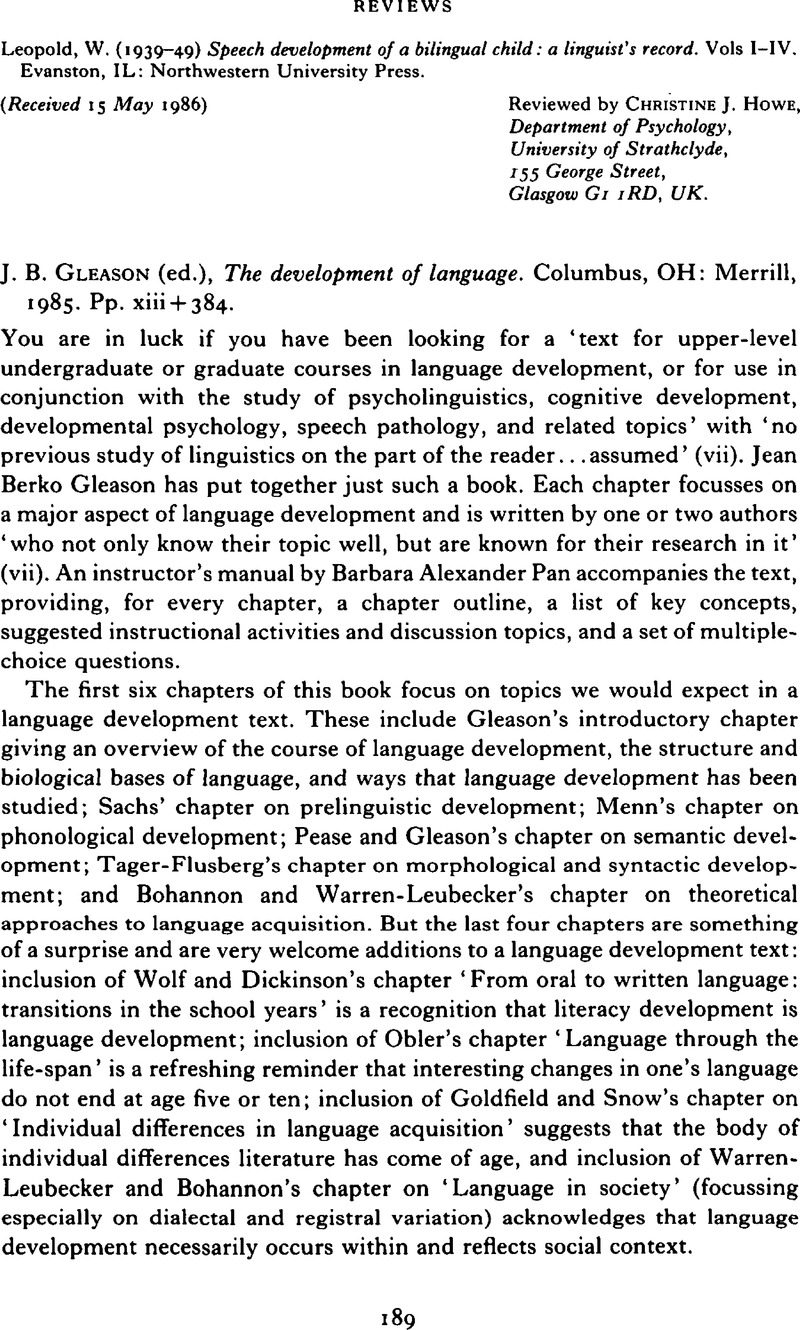No CrossRef data available.
Article contents
Published online by Cambridge University Press: 17 February 2009
Abstract
An abstract is not available for this content so a preview has been provided. Please use the Get access link above for information on how to access this content.

- Type
- Reviews
- Information
- Copyright
- Copyright © Cambridge University Press 1987
References
Edelsky, C. (1981) From ‘jimosalsco’ to ‘7 narangas se calleron y el arbolest-triste en lagrymas’: writing development in a bilingual program. In Cronnell, B. (ed.), The writing needs of linguistically different students. Los Alamitos, CA: SWRL Educational Research and Development.Google Scholar
Edelsky, C. (1982) Writing in a bilingual program: the relation of L1 and L2 texts. TESOL Quarterly 16. 211–28.CrossRefGoogle Scholar
Edelsky, C. (1983) Segmentation and punctuation: developmental data from young writers in a bilingual program. Research in the Teaching of English 17. 135–56.Google Scholar
Edelsky, C. & Draper, K. (in press) Reading/‘reading’, Writing/‘writing’, text/‘text’. In Petrosky, A. (ed.), Reading andwriting: theory and research. Norwood, NJ: Ablex Publishing Corporation.Google Scholar
Ferriero, E. & Teberosky, A. (1982) Literacy before schooling. Portsmouth, NH: Heinemann.Google Scholar
Goodman, K. & Goodman, Y. (1977) Learning about psycholinguistic processes by analyzing oral reading. Harvard Educational Review 47. 317–33.CrossRefGoogle Scholar
Harste, J., Burke, C. & Woodward, V. (1981) Children, their language and world: initial encounters with print. Bloomington: Indiana University Press.Google Scholar
Harste, J., Burke, C. & Woodward, V. (1983) The young child as writer-reader and informant. Bloomington: Indiana University Press.Google Scholar
Harste, J., Woodward, V., & Burke, C. (1984) Language stories and literacy lessons. Portsmouth, NH: Heinemann.Google Scholar
Hudelson, S. (1984) Kan yu ret an rayt en ingles: children become literate in English as a second language. TESOL Quarterly 18. 221–38.CrossRefGoogle Scholar


